Growing tomatoes without a garden might sound like an impossible dream, especially if you’re staring out of your apartment window at nothing but concrete! But trust me, it’s absolutely achievable, and I’m here to show you how. For centuries, humans have cultivated food in limited spaces, from ancient rooftop gardens in bustling cities to resourceful container gardening during times of scarcity. This DIY guide isn’t just about bypassing the need for a sprawling backyard; it’s about connecting with that age-old tradition of nurturing life, even in the most unexpected places.
Let’s face it, fresh, juicy, sun-ripened tomatoes are a summer staple, and store-bought ones just don’t compare. But what if you don’t have the luxury of a traditional garden plot? That’s where this article comes in! I’ll walk you through simple, effective DIY tricks and hacks that will allow you to enjoy homegrown tomatoes, no matter how small your living space. From choosing the right containers and soil to mastering watering and sunlight, I’ll cover everything you need to know to successfully growing tomatoes without a garden. Get ready to transform your balcony, patio, or even a sunny windowsill into a thriving tomato oasis!

Growing Tomatoes Without a Garden: My Balcony Tomato Bonanza!
Okay, so you’re dreaming of juicy, sun-ripened tomatoes but lack the sprawling garden to make it happen? Don’t despair! I’m here to tell you that growing tomatoes without a garden is totally achievable, even if all you have is a balcony, patio, or even a sunny windowsill. I’ve been doing it for years, and let me tell you, there’s nothing quite like the taste of a homegrown tomato you nurtured yourself. This guide will walk you through everything you need to know to create your own balcony tomato bonanza!
Choosing the Right Tomato Variety
This is crucial! Not all tomatoes are created equal, especially when it comes to container gardening. You need to think small and compact.
* Determinate vs. Indeterminate: This is the big one. Determinate tomatoes grow to a certain size and then produce all their fruit at once. They’re bushier and more compact, making them ideal for containers. Indeterminate tomatoes, on the other hand, keep growing and producing fruit throughout the season. They need a lot of space and support, which can be tricky on a balcony.
* Cherry and Grape Tomatoes: These are generally a safe bet. They tend to be more compact and prolific, and their smaller size means they ripen faster. Plus, they’re delicious!
* Patio Tomatoes: As the name suggests, these are specifically bred for container gardening. They’re compact, disease-resistant, and produce a good yield.
* Bush Varieties: Look for varieties labeled “bush” or “dwarf.” These are naturally smaller and require less pruning.
Some of my personal favorites for container growing include:
* ‘Patio’ Tomato: A classic for a reason! Reliable and productive.
* ‘Tiny Tim’ Tomato: Super compact and perfect for small spaces.
* ‘Roma’ Tomato: Determinate and great for making sauces.
* ‘Sungold’ Tomato: Indeterminate, but manageable in a large container with proper support. The sweetest cherry tomato ever! (Just be prepared to prune!)
Gathering Your Supplies
Before you even think about planting, you need to get your supplies in order. Trust me, having everything ready beforehand will make the whole process much smoother.
* Containers: Size matters! For determinate varieties, aim for at least a 5-gallon container. For indeterminate varieties (like ‘Sungold’), go even bigger – 10 gallons or more is ideal. Make sure your containers have drainage holes!
* Potting Mix: Don’t use garden soil! It’s too heavy and compacts easily. Invest in a good quality potting mix specifically designed for containers. I like to use a mix that contains peat moss, perlite, and vermiculite for good drainage and aeration.
* Tomato Cages or Stakes: Even determinate varieties can get a bit unruly, so some support is essential. Tomato cages are great for bushier varieties, while stakes are better for single-stem plants.
* Fertilizer: Tomatoes are heavy feeders, so you’ll need to fertilize regularly. Use a balanced fertilizer specifically formulated for tomatoes. I prefer organic options like fish emulsion or compost tea.
* Watering Can or Hose: You’ll need a way to water your plants regularly. A watering can is fine for smaller containers, but a hose with a gentle spray nozzle is more convenient for larger setups.
* Hand Trowel: For planting and transplanting.
* Pruning Shears: For removing suckers (more on that later!).
* Gloves: Optional, but I always wear gloves when gardening.
* Mulch: Helps retain moisture and suppress weeds. Straw, wood chips, or even shredded newspaper work well.
Step-by-Step Planting Guide
Okay, let’s get our hands dirty!
1. Choose Your Location: Tomatoes need at least 6-8 hours of direct sunlight per day. Pick the sunniest spot on your balcony or patio.
2. Prepare Your Containers: Fill your containers with potting mix, leaving a few inches of space at the top.
3. Plant Your Seedlings: Gently remove the tomato seedlings from their nursery pots. If the roots are tightly bound, gently loosen them with your fingers.
4. Bury Deep: This is a trick I learned from an old gardener. Plant your tomato seedlings deeper than they were in their original pots, burying the stem up to the first set of leaves. Tomatoes can grow roots from their stems, which will result in a stronger, healthier plant.
5. Water Thoroughly: Water your newly planted seedlings thoroughly until water drains out of the bottom of the container.
6. Add Support: Install your tomato cages or stakes immediately after planting. This will prevent you from damaging the roots later on.
7. Mulch: Add a layer of mulch around the base of the plants to help retain moisture and suppress weeds.
Watering and Fertilizing
Watering and fertilizing are key to healthy tomato plants and a bountiful harvest.
* Watering: Tomatoes need consistent moisture, especially during hot weather. Water deeply whenever the top inch of soil feels dry to the touch. Avoid watering the leaves, as this can promote fungal diseases. Water in the morning so the leaves have time to dry before nightfall.
* Fertilizing: Start fertilizing your tomato plants about two weeks after planting. Use a balanced fertilizer according to the package directions. I like to fertilize every two weeks with a diluted solution of fish emulsion or compost tea. As the plants start to set fruit, switch to a fertilizer that’s higher in phosphorus and potassium to promote fruit development.
Pruning and Training
Pruning and training are essential for maximizing your tomato yield, especially with indeterminate varieties.
* Removing Suckers: Suckers are small shoots that grow in the “armpit” between the main stem and the branches. They steal energy from the plant and can reduce fruit production. Pinch off suckers regularly, especially on indeterminate varieties. Determinate varieties generally don’t need as much pruning.
* Training: As your tomato plants grow, train them to grow up the stakes or through the tomato cages. Use soft twine or plant ties to secure the stems to the support.
Dealing with Pests and Diseases
Even on a balcony, your tomato plants can be susceptible to pests and diseases. Here’s how to deal with them:
* Aphids: These tiny insects suck the sap from the leaves and can weaken the plant. Blast them off with a strong stream of water or use insecticidal soap.
* Tomato Hornworms: These large green caterpillars can devour your tomato plants in a matter of days. Handpick them off the plants and drop them into a bucket of soapy water.
* Blossom End Rot: This is a common problem caused by calcium deficiency. It causes the bottom of the tomatoes to turn black and leathery. To prevent blossom end rot, make sure your soil is well-drained and that you’re watering consistently. You can also add calcium to the soil by mixing in some crushed eggshells or bone meal.
* Fungal Diseases: Fungal diseases like early blight and septoria leaf spot can cause yellowing and spotting of the leaves. To prevent fungal diseases, water in the morning, avoid overhead watering, and provide good air circulation. If you see signs of fungal disease, remove the affected leaves and spray the plants with a fungicide.
Harvesting Your Tomatoes
The best part!
* Ripeness: Tomatoes are ripe when they are fully colored and slightly soft to the touch.
* Harvesting: Gently twist the tomato off the vine.
* Enjoy! There’s nothing quite like the taste of a homegrown tomato. Use them in salads, sandwiches, sauces, or just eat them straight off the vine!
Troubleshooting Tips
* Yellowing Leaves: Could be a sign of overwatering, underwatering, nutrient deficiency, or disease. Check the soil moisture, fertilize if needed, and look for signs of pests or diseases.
* No Fruit: Could be due to lack of pollination, high temperatures, or nutrient deficiency. Gently shake the plants to help with pollination, provide shade during the hottest part of the day, and fertilize with a tomato-specific fertilizer.
* Cracked Tomatoes: Often caused by inconsistent watering. Water regularly and deeply, especially during hot weather.
Growing tomatoes without a garden is a rewarding experience. With a little planning and effort, you can enjoy fresh, delicious tomatoes all summer long, right from your own balcony! Happy gardening!
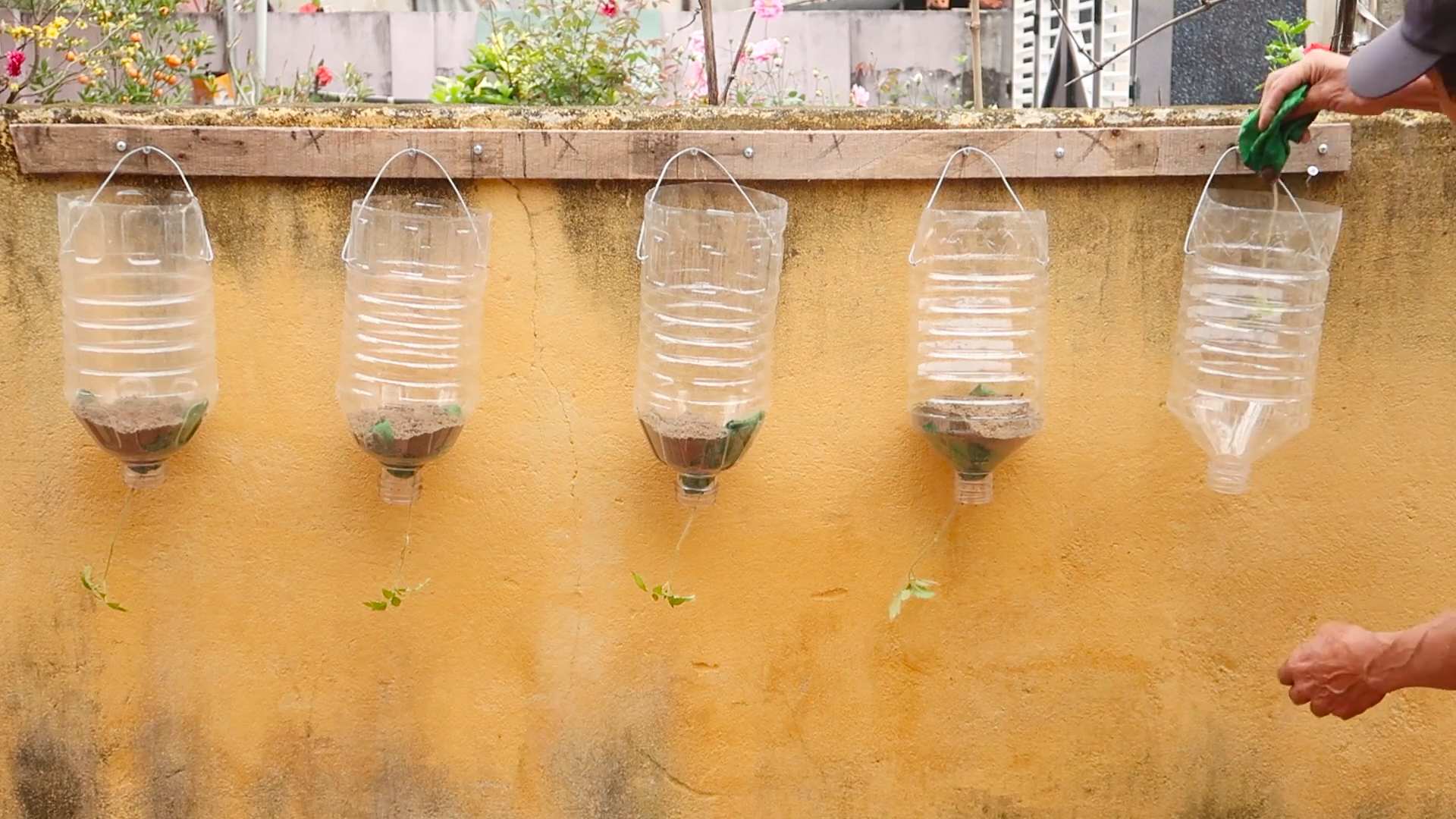
Conclusion
So, there you have it! Growing tomatoes without a garden isn’t just a whimsical dream; it’s an achievable reality. We’ve explored the ins and outs of container gardening, from selecting the right varieties and containers to mastering the art of watering and feeding. The beauty of this method lies in its accessibility and adaptability. Whether you have a sprawling balcony, a sunny patio, or even just a well-lit windowsill, you can cultivate your own delicious, homegrown tomatoes.
This DIY trick is a must-try for several compelling reasons. First and foremost, it empowers you to enjoy fresh, flavorful tomatoes even without traditional garden space. Store-bought tomatoes simply can’t compare to the vibrant taste of a sun-ripened tomato picked straight from your own plant. Secondly, it’s a fantastic way to connect with nature and experience the satisfaction of nurturing something from seed to harvest. The process is therapeutic, educational, and incredibly rewarding. Finally, growing your own tomatoes is a sustainable choice, reducing your reliance on commercially grown produce and minimizing your environmental footprint.
But don’t stop there! Experiment with different tomato varieties to discover your favorites. Try growing cherry tomatoes, Roma tomatoes, or even heirloom varieties in your containers. Consider companion planting herbs like basil or marigolds alongside your tomatoes to deter pests and enhance flavor. You can also explore different container materials, such as terracotta pots, plastic containers, or even repurposed items like buckets or grow bags.
Remember, the key to success lies in providing your tomato plants with ample sunlight, consistent watering, and regular feeding. Don’t be afraid to experiment and adjust your approach as needed. Every growing season is a learning opportunity, and with a little patience and dedication, you’ll be rewarded with a bountiful harvest of delicious tomatoes.
We wholeheartedly encourage you to give this DIY trick a try. Embrace the challenge, get your hands dirty, and experience the joy of growing your own tomatoes. And most importantly, share your experiences with us! We’d love to hear about your successes, your challenges, and any tips or tricks you discover along the way. Post pictures of your tomato plants, share your favorite recipes, and let’s create a community of urban gardeners who are passionate about growing their own food. Let us know if this **DIY trick** helped you grow the best tomatoes you have ever had.
Now, let’s address some frequently asked questions to help you get started on your tomato-growing journey.
Frequently Asked Questions (FAQ)
What are the best tomato varieties to grow in containers?
Choosing the right tomato variety is crucial for success in container gardening. Determinate varieties, also known as bush tomatoes, are generally better suited for containers because they are more compact and reach a predetermined size. Indeterminate varieties, on the other hand, continue to grow and produce fruit throughout the season, requiring more space and support.
Some excellent determinate varieties for containers include:
* Roma: A classic paste tomato perfect for sauces and canning.
* Celebrity: A reliable and productive all-purpose tomato.
* Patio: A compact variety specifically bred for containers.
For indeterminate varieties, consider:
* Cherry Tomatoes (like Sweet 100 or Sungold): These are prolific producers and their smaller size makes them manageable in containers.
* Early Girl: A popular early-season tomato that performs well in containers.
* Black Krim: An heirloom variety with a unique flavor and color, but may require extra support.
Ultimately, the best variety for you will depend on your personal preferences and the amount of space you have available.
What size container do I need for growing tomatoes?
The size of the container is another important factor to consider. A general rule of thumb is to use a container that is at least 20 inches in diameter and 20 inches deep for determinate varieties. Indeterminate varieties will require even larger containers, ideally 25 inches or more in diameter and depth.
Larger containers provide more room for the roots to grow, which leads to healthier and more productive plants. They also retain moisture better, reducing the need for frequent watering.
What type of soil should I use for growing tomatoes in containers?
Avoid using garden soil in containers, as it can become compacted and poorly drained. Instead, opt for a high-quality potting mix that is specifically formulated for container gardening. These mixes are typically lightweight, well-draining, and contain essential nutrients for plant growth.
You can also amend your potting mix with compost or other organic matter to improve its fertility and water retention.
How often should I water my tomato plants in containers?
Watering frequency will depend on several factors, including the size of the container, the weather conditions, and the type of soil you are using. As a general rule, water your tomato plants deeply whenever the top inch of soil feels dry to the touch.
Avoid overwatering, as this can lead to root rot. It’s better to water thoroughly less often than to water shallowly more frequently. During hot, dry weather, you may need to water your plants daily.
How often should I fertilize my tomato plants in containers?
Tomato plants are heavy feeders and require regular fertilization to produce a bountiful harvest. Start fertilizing your plants about two weeks after transplanting them into their containers.
Use a balanced fertilizer that is specifically formulated for tomatoes. Follow the instructions on the fertilizer package for application rates and frequency. You can also use organic fertilizers, such as compost tea or fish emulsion.
How much sunlight do tomato plants need?
Tomato plants need at least 6-8 hours of direct sunlight per day to thrive. Choose a location for your containers that receives plenty of sunlight throughout the day. If you don’t have a sunny spot, you can supplement with grow lights.
How do I support my tomato plants in containers?
Indeterminate tomato varieties will require support to prevent them from sprawling and breaking under the weight of their fruit. You can use stakes, cages, or trellises to support your plants.
Insert the support structure into the container when you transplant your tomato plant to avoid damaging the roots later on.
How do I prevent pests and diseases from attacking my tomato plants?
Regularly inspect your tomato plants for signs of pests or diseases. Common pests that attack tomatoes include aphids, whiteflies, and tomato hornworms. Common diseases include early blight, late blight, and blossom end rot.
You can use organic pest control methods, such as insecticidal soap or neem oil, to control pests. To prevent diseases, ensure good air circulation around your plants and avoid overhead watering.
What is blossom end rot and how do I prevent it?
Blossom end rot is a common problem in tomatoes that is caused by a calcium deficiency. It manifests as a dark, leathery spot on the bottom of the tomato fruit.
To prevent blossom end rot, ensure that your soil is rich in calcium and that your plants are receiving consistent watering. You can also add calcium supplements to your soil.
When should I harvest my tomatoes?
Tomatoes are typically ready to harvest when they are fully colored and slightly soft to the touch. Gently twist the tomato from the vine, leaving the stem attached.
Enjoy your homegrown tomatoes fresh, or use them in your favorite recipes!
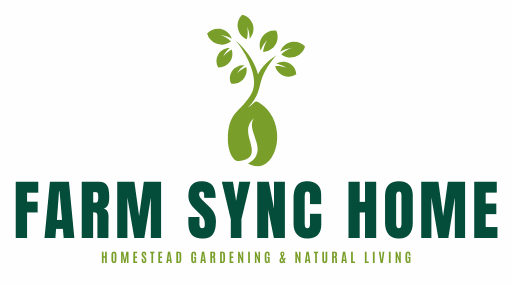
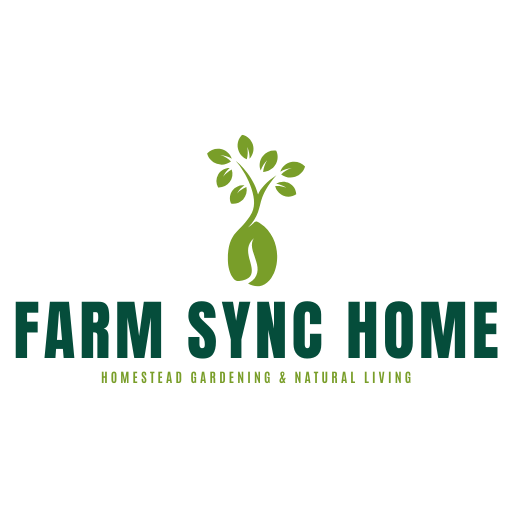
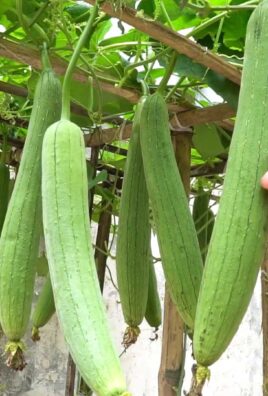
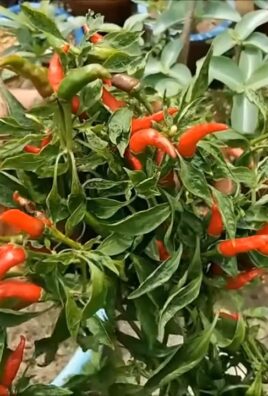

Leave a Comment